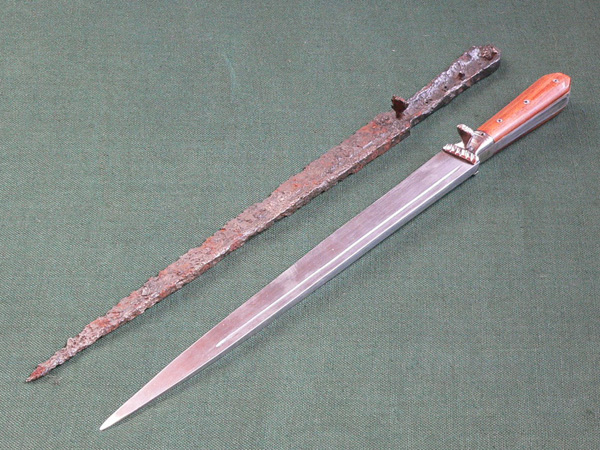I was checking out the thread, here is the link to it, http://www.myArmoury.com/talk/viewtopic.php?t=15355, and the sword caught my eye as slightly unusual so I started digging for more information and trying to see what I could find on it. The best I could do is conclude that it is a messer, more specifically a Rugger. Ruggers being messers that are more suited for thrusting then other types of messers. Also I found out that messers in general seem to be a later form of the evolution of the seax.
I just wanted to run this by everyone and see if I am on the right track and where I can look up more information on Ruggers, Messers, and about the evolution from the seax into late medieval/early renaissance swords.
Here are two cropped images of the sword I am looking at:


